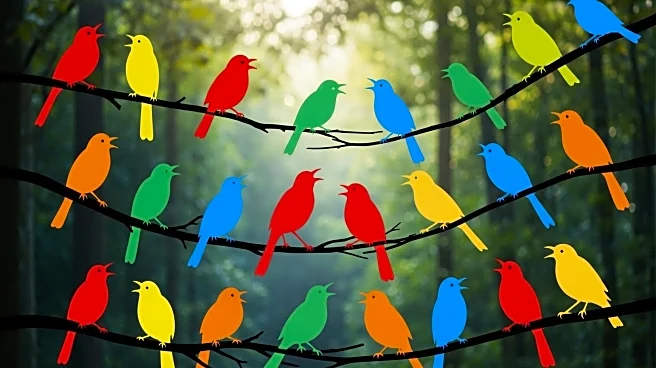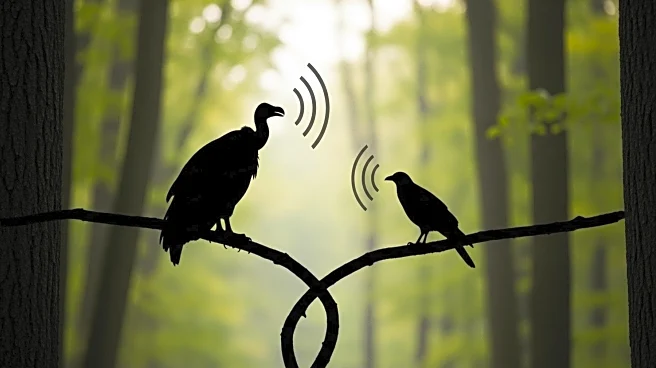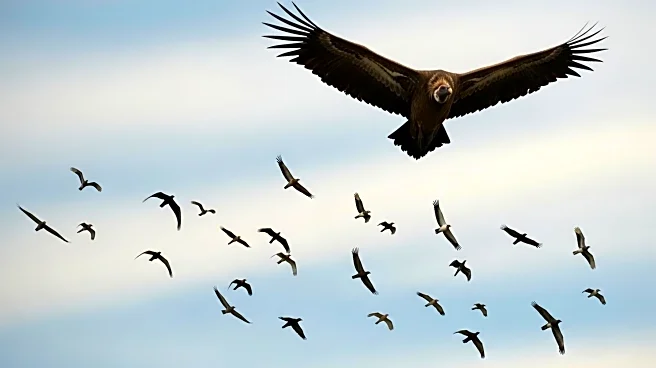What's Happening?
An international team of researchers has discovered that birds across different continents share a remarkably similar learned vocal warning to identify parasitic enemies near their nests. This study, published in Nature Ecology and Evolution, reveals that more than 20 bird species across four continents produce nearly identical 'whining' vocalizations when they detect a parasitic bird. The research, led by Cornell University and Donana Biological Station, highlights the first known example of an animal vocalization that is learned from an innate response shared across multiple species. Brood parasitism, where birds like cuckoos lay eggs in other species' nests, is a significant threat, prompting host birds to develop these warning calls. The study suggests that these calls are a midpoint between instinctive animal vocalizations and fully learned vocal units like human words.
Why It's Important?
This discovery challenges the traditional view of a strict division between animal communication systems and human language. The findings suggest that learned communication systems, akin to human language, may have evolved through the integration of instinctive and learned elements. This has implications for understanding the evolution of communication in animals and humans. The study also highlights the role of natural selection in shaping vocal communication systems, as these warning calls are crucial for survival in areas heavily affected by brood parasitism. The research provides insights into how species can develop cooperative behaviors to combat common threats, which could influence conservation strategies and the study of animal behavior.
What's Next?
Future research may focus on exploring the genetic and neurological basis of these learned vocalizations to understand how they are transmitted across generations. Additionally, scientists might investigate whether similar communication systems exist in other animal groups facing comparable ecological pressures. The study opens avenues for examining the evolution of communication in more complex social structures, potentially offering broader insights into the development of language and cooperation in the animal kingdom.
Beyond the Headlines
The study's findings could have broader implications for understanding the evolution of communication and cooperation in social species. By demonstrating a link between innate and learned vocalizations, the research may provide a model for studying the origins of language and social behavior in humans. This could lead to a deeper understanding of how complex communication systems evolve and adapt in response to environmental challenges.










